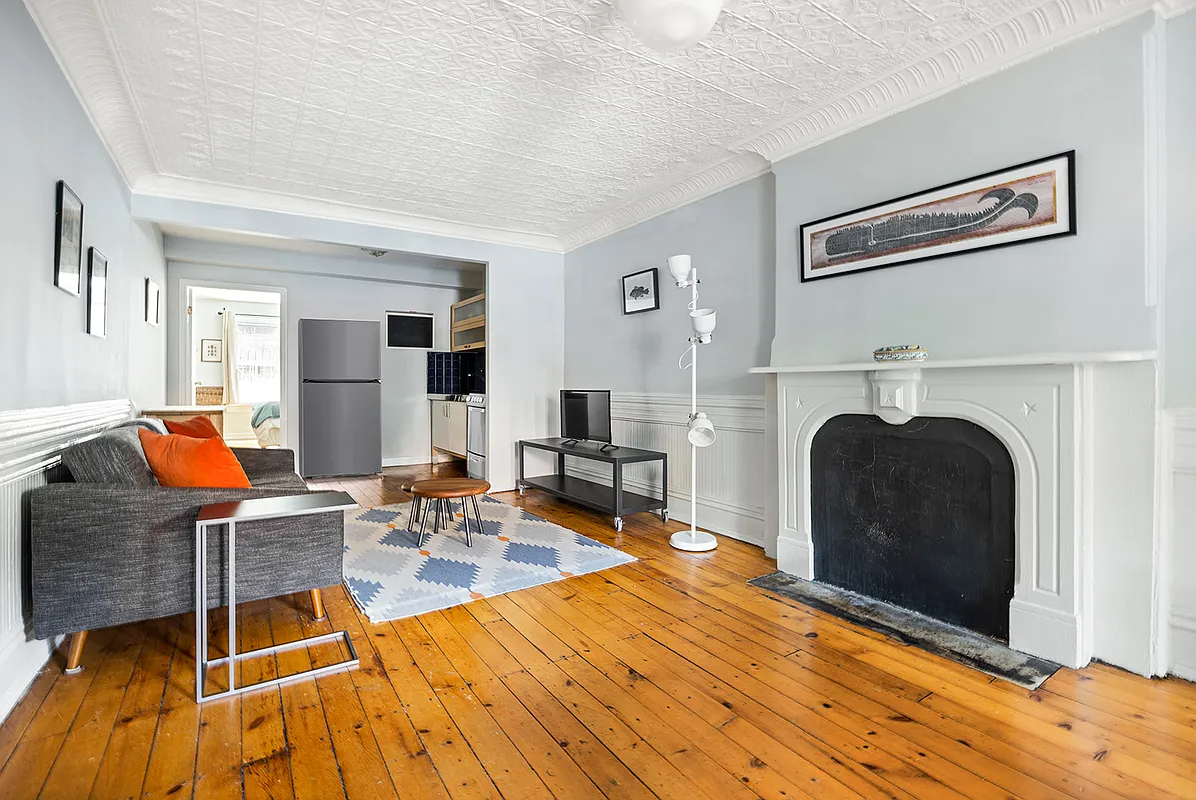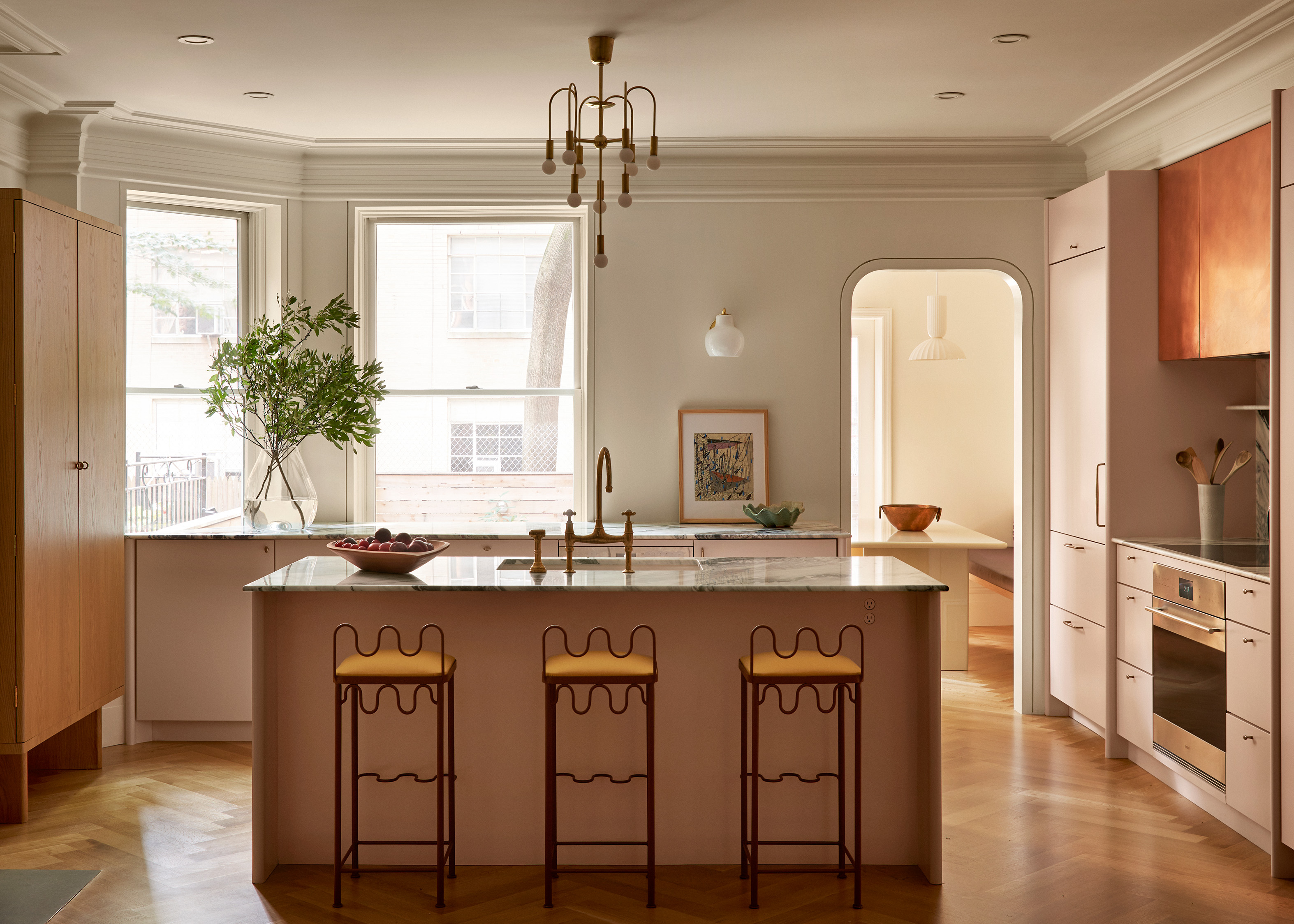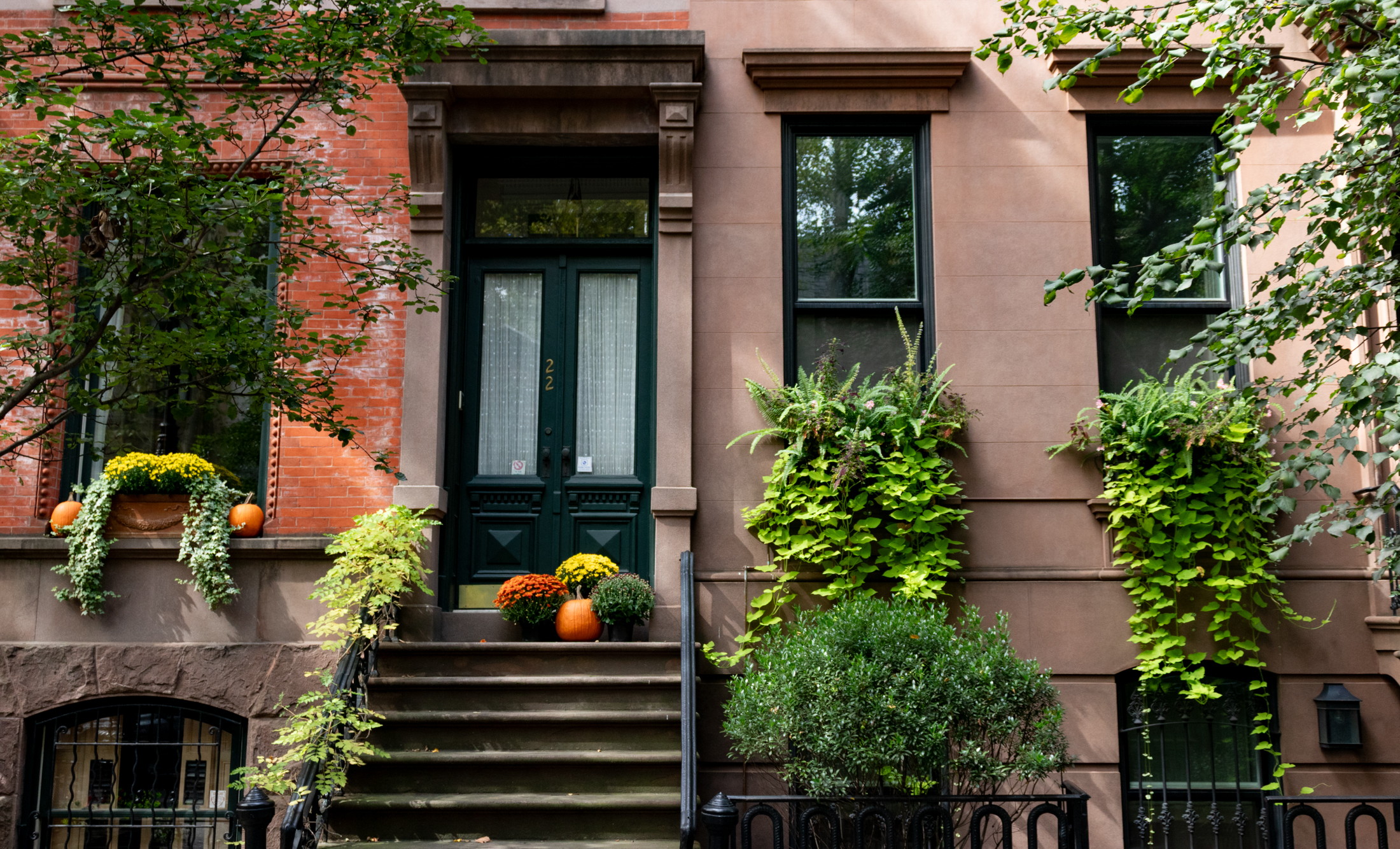Modernism's Role in the Brownstone Revival
Batten down the hatches, the modern renovators are coming! According to the NY Post this weekend, there’s a whole new generation of people buying and renovating townhouses with less concern for the past than the future. Like many articles that strain to identify a trend, we think this probably overstates the case. What you are…


Batten down the hatches, the modern renovators are coming! According to the NY Post this weekend, there’s a whole new generation of people buying and renovating townhouses with less concern for the past than the future. Like many articles that strain to identify a trend, we think this probably overstates the case. What you are seeing more of (which the article also points out), in our opinion, is a more eclectic mixing of traditional and modern when it comes to the interior decoration of these places, which we’re all for. (In our living room, for example, we’ve got a glass DWR coffee table next to a Biedermeier sofa.) “More than strictly modern, many have achieved an interesting balance between old and new,” Katherine Dykstra writes. We still think it’s a small (thankfully) minority who buy a house with historic architectural details and rip them out to go modern, though the couple in the article who bought the Harlem townhouse appears to be just such an example. We suspect, however, that when it comes time to sell, they’ll be ruing the day they opted for exposed brick walls and a modern cement fireplace.
Funky Townhouses [NY Post]





Here’s an addition to the last post. If the Baumans hadnt purchased the house, it would likely have become one of the casualties. The house was bought at auction by a renovator/flipper. The Baumans bid below his ask citing the ammount of cash needed to bring the place back, about 300k they estimated. The renovator/flipper laughed and said it could be done for 100-150. I have since witnessed what he meant on a different property. Rip and Rock method – rip everything out, sheetrock over it, paint it, done. Finger-joint pine door casing makes for great base board too! Yikes! Luckily an end-user got the place and will enjoy it for many years to come.
I sold the Prospect Lefferts townhouse to the Baumans and they took great pains to save what detail was left. A seriously leaky roof and a missing window in the rear of the top floor made for some serious problems over years of exposure. The previous owners ignored the problems and took up residence on the garden level. In my experience, most buyers want to preserve the old and update with new only when the old is too far gone. With prices as they are its rare to fine someone who can afford a complete restoration (not just a renovation) when the detail has been damaged or removed.
As someone who works in the design world, I definitely recognize that people’s tastes seem to be moving back to the center, if modern/minimal aesthetic is one end and traditional/period look is the other. When I used to work in Contemporary art, you could almost predict the designers if not the exact pieces of furniture that every collector had in his home (Mis, Breuer, Saaranin, etc). I currently work for a non-contemporary gallery (yes, there are still a few left in NY) and it used to be that our clients had very traditional, period setting homes. More recently I’ve noticed a certain amount of judicious eclecticism ™, and our clients seem more willing to mix modern with antique, as opposed to feeling confined to one look. I guess it just proves that good things of any period can live well together if you have an eye for it. It’s certainly more interesting than the plethora of interiors taken straight out of DWR catalogs.
I just thankful that there are people out there that think creatively about their renovations and not solely in terms of resale value.
It would be interesting to see the Prospect Lefferts house mentioned in the Post before any renovations took place in 2005 and what it looks like now after having completed some of the renovation work. I doubt they destroyed much of the original details and there is no reason that going modern means destroying well preserved period details. Perhaps Brownstoner can convinve the PLG home owners to further share a glimpse of the work that they are doing to their home.
There was a recent issue of Dwell (a magazine that bores me to tears, but the cover that particular month –December, maybe? — was intriguing) dealt with updating “old” houses. The subhead for the article said something along these lines:
“We all want to have the luxury of designing and living in our own modern house, but sometimes we have to settle for some old brownstone or carriage house. What to do? Here are some tips!”
I almost screamed with rage. “SEttle for?” People pay premium these days ESPECIALLY to live in an old building, because it’s exciting to update and thrilling to have the very very old world craft around you — the superthick walls, the gorgeous proportions, stuff that no new building will ever have (we have “progressed” in our materials as well as our designs to accept cheapness as “minimalism”).
The point for me is that every single modern catalogue I see for furniture, including the most astounding modern stuff from B&B italia or that swiss company that makes the shelving (see Cooper Hewitt bookstore) all place their work in the context of a glorious old space. Why? Cause it’s cool. And gorgeous.
When I moved to my former rental, which had detail galore under the paint, our new next door neighbor came over, looked at our painted marble fireplace, (one of 5), and said, “Your should tear those out, I took a sledge hammer to all of mine, and got rid of those suckers.”
I almost had a coronary right there. He had no idea how close he came to getting kicked out forever.
I really don’t think there’s a rash of new buyers razing beautiful details from salvagable homes. I’m sure it happens — say, people who want to open up a floor by taking out walls — but think about it: if you wanted to do a modern reno, why would you go that route? You’d pay a lot more for nothing. Much cheaper, if nothing else, to buy the house that needs a gut reno anyway.
At least from my anecdotal but long househunting experience, details tend to get ripped out in houses that have been in a family for a long time, and at some point end up in the hands of heirs that don’t have the money or inclination to maintain the houses, or to reno while preserving original details. Or in some cases by flippers. But there’s little incentive for someone who intends to live in a house to buy a place full of good stuff and rip it out willy-nilly. It’s a pain and a waste of money.
Sorry CHP and Bstoner, but I think you’re tilting at straw men here.
We’re on the same page then. Nothing against modern, just against needless destruction. As for the exposed brick and modern cement fireplace? It’s not our piece of cake and we think, chances are, it’s not the best call re: resale. But as has been pointed out, obviously the owners’ enjoyment of their home is paramount here. We’re not suggesting that every aspect of a reno should be geared toward resale. Hell, we put a friggin interior window on our master bath. Our day of reckoning is sure to come too.